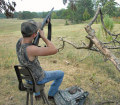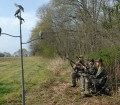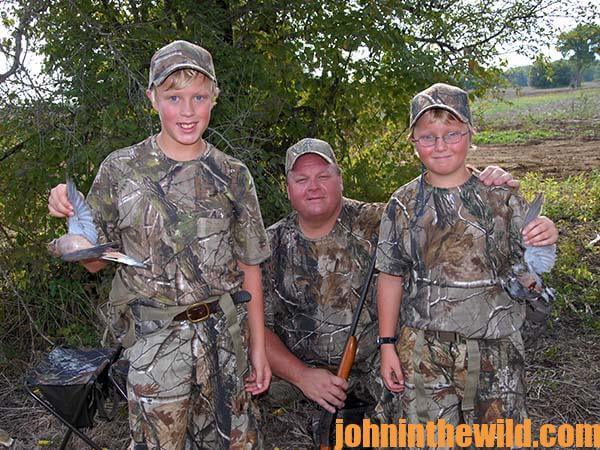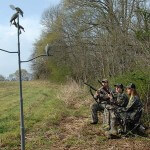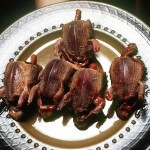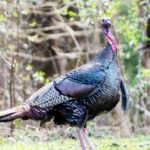John’s Note: The winged warriors from hell, also known as mourning doves, streak across the fall sky like World War II Kamikaze pilots. Their ability to dive, pitch and roll will challenge the skills of even the best wing shooters. Southerners especially enjoy the tradition of dove hunting which opens soon in many states, and probably like it as much as eating black-eyed peas, speckled butter beans, a pone of cornbread and a glass of buttermilk. But just because you go out and sweat in the hot sun of early fall, get bitten by redbugs in the grass and punctured by industrial-strength mosquitoes, you still may not take home a mess of doves. Here’s some items to consider to make your shots on doves.
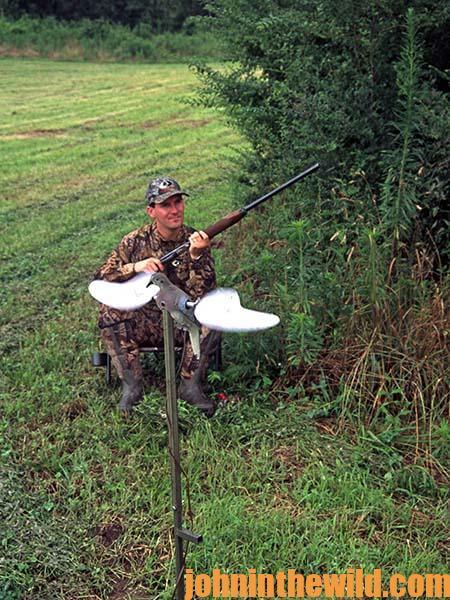 * Guns, Shells and Chokes – Many hunters choose to shoot modified chokes when they hunt doves. Because most of the time the doves will fly at 40 yards or less when they come in, this choke not only provides maximum range for long shots but also offers plenty of shot pattern at the closer yardages. If you shoot a full choke for doves, this choke can help you take birds out to 45 yards and more. But often you’ll find the choke so tight you may miss the birds that come in close. The improved cylinder choke will bag birds at 30 to 35 yards. However, your long-range pattern becomes too loose to ensure that you successfully can down a bird.
* Guns, Shells and Chokes – Many hunters choose to shoot modified chokes when they hunt doves. Because most of the time the doves will fly at 40 yards or less when they come in, this choke not only provides maximum range for long shots but also offers plenty of shot pattern at the closer yardages. If you shoot a full choke for doves, this choke can help you take birds out to 45 yards and more. But often you’ll find the choke so tight you may miss the birds that come in close. The improved cylinder choke will bag birds at 30 to 35 yards. However, your long-range pattern becomes too loose to ensure that you successfully can down a bird.
“I use Winchester trap and skeet loads,” Jim Porter, longtime avid bird hunter and Mossy Oak enthusiast in Mississippi, reports.
Most dove hunters will buy the cheapest shells they can find.
Then they can’t understand why they don’t consistently down doves. But by paying $1 a box more for quality trap and skeet loads, you’ll have shells that produce more dense and uniform patterns. These shells also will allow you to take more birds at greater ranges.” Generally, the better grades of shells produce more doves with fewer shots. Porter prefers to shoot No. 7-1/2-shot, because he finds the No. 7-1/2s more effective at long range than No. 8 shot.
* Proper Gun Position – To shoot accurately, keep your eyes as level as possible. Simply raising your eyebrows up on one side of your face will cause you to shoot incorrectly. When you bring the gun to your shoulder, your arm will make a pocket in your shoulder for the gun to fit in naturally. Once you position your gun correctly in the pocket of your shoulder, then lay your cheek down on the stock to see and aim properly.
You’ll never have a blue and black shoulder or arm from the recoil of a gun if you mount the gun properly.
* The Best Lead – Most dove hunters use two types of leads. With the sustained lead, you hold your barrel out in front of the bird during the aiming process. When you see proper distance between the end of the barrel and the dove, then you pull the trigger. Or, some hunters prefer the swing-through method. Tony Rosetti of West Point, Mississippi, an award-winning trap-and-skeet shooter recommends that you lead the birds by, “Using the swing-through method of shooting. I get on the bird as I look down the barrel of my shotgun. Then I come from behind the bird and squeeze the trigger, just as I pass the bird. I continue to swing the barrel of the gun as I follow through the shot, just like a golfer continues his swing after he hits the ball. I believe this provides a better method of aiming than using a sustained lead like many hunters do.”
To determine your lead, note how strong the wind blows, how fast the dove flies, whether or not the bird flies with or against the wind and the distance between you and the dove.
with or against the wind and the distance between you and the dove.
Generally, if you attempt to bag a dove from 25 to 30 yards, then you need to lead the bird by 3 to 4 feet. To learn to use a 4-foot lead, try this. Put two sticks on the ground 4-feet apart. Aim at the first stick while looking at the second stick to help your brain and eyes determine what a 4 foot lead looks like.
Even if you use the best shells, gun, and chokes, you still may miss doves. Wing-shooting instructors can analyze why you shoot in front of the bird or behind targets and can teach you the proper shooting position to mount the gun and position your head. Even raising your head up only 1/2-inch above the rib on the barrel can cause you to shoot 3 feet high.
* Time to Shoot – Often a hunter waits until a dove riding the wind flies right on top of him before taking the shot. Because the hunter’s shot will have a tight pattern, the dove can dodge it more easily. Instead, try to bag a dove 20- to 30-yards out in front of you to allow your shot pattern to open-up. Get into the proper shooting position before you squeeze the trigger. Then if the zigging-and-zagging bird does start to dip to the left or to the right, you may have time to compensate for the dove’s movement if it gets farther out in front of you instead of straight up over your head.
* Follow-Up Shots – After you’ve shot and missed a dove, forget about the first shot, and concentrate on the second shot. Make sure you still have your cheek against the stock. Swing your barrel out in front of the bird before you squeeze the trigger, and don’t rush the shot. To really enjoy the sport of dove hunting, carefully consider the equipment you’ll use, the birds’ habits and haunts and the techniques you’ll use to take them. Remember, the more you learn about doves and shooting, the more birds you’ll bag on each outing.
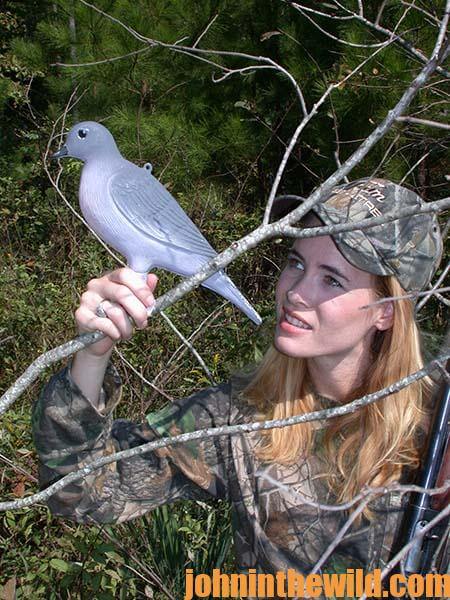 To get the Kindle e-cookbook “The Best Wild Game & Seafood Cookbook Ever: 350 Southern Recipes for Deer, Turkey, Fish, Seafood, Small Game and Birds” by John and Denise Phillips, click here.
To get the Kindle e-cookbook “The Best Wild Game & Seafood Cookbook Ever: 350 Southern Recipes for Deer, Turkey, Fish, Seafood, Small Game and Birds” by John and Denise Phillips, click here.
About the Author
John Phillips, winner of the 2012 Homer Circle Fishing Award for outstanding fishing writer by the American Sportfishing Association (ASA) and the Professional Outdoor Media Association (POMA), the 2008 Crossbow Communicator of the year and the 2007 Legendary Communicator chosen for induction into the National Fresh Water Hall of Fame, is a freelance writer (over 6,000 magazine articles for about 100 magazines and several thousand newspaper columns published), magazine editor, photographer for print media as well as industry catalogues (over 25,000 photos published), lecturer, outdoor consultant, marketing consultant, book author and daily internet content provider with an overview of the outdoors. Click here for more information and a list of all the books available from John E. Phillips.

